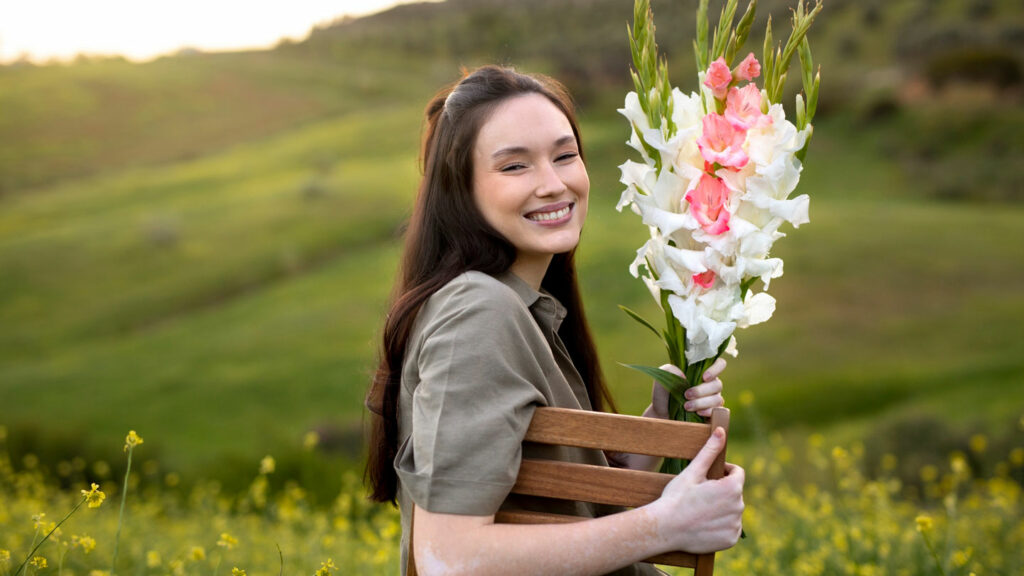Flowers charm humankind across societies, rising above language hindrances. Opening the capability of flowers to support mental well-being is an astonishing excursion into the domains of science and feeling.
Research asserts flowers trigger positive feelings, influencing our cerebrum science. Tones and fragrances assume essential parts, impacting temperament and encouraging well-being.
This investigation dives into the profound effect flowers have on our well-being. It’ll disentangle the many-sided association between petals and peace. Well, let’s continue reading before you look for what flower represents mental health.
The Science Behind Floral Therapy

Flowers employ a profound effect on human feelings, forming our mental scene through a dance of varieties and fragrances. Scientific examinations confirm this, noteworthy the complicated connection among blooms and mind science.
Research joins openness to flowers with elevated positive feelings, displaying the immediate impact of nature’s range on our well-being. Varieties and fragrances are dynamic members, balancing mind-set and making an amicable ensemble inside our minds.
The mind, when presented to flower upgrades, goes through a change, delivering synapses that incite bliss and unwinding. This compound response fills in as a demonstration of the therapeutic potential implanted in the actual embodiment of flowers.
Flowers As Natural Stress Relievers
Blooms arise as powerful stress-relievers, effectively decreasing cortisol levels and injecting quiet into our chaotic lives. Scientific proof highlights the viability of flowers as a characteristic remedy for the stress predominant in our cutting edge ways of life.
Flowers capability as strong cures to uneasiness, offering a tranquil safe-haven in their presence. Genuine stories reverberation this, delineating how blooms become mates in exploring the fierce waters of stress, giving comfort and serenity.
The therapeutic effect of flowers goes beyond feel, working effectively to calm nerves and reestablish a feeling of equilibrium. This powerful interaction between nature’s manifestations and our mental well-being lays out flowers simply enriching components.
The Symbolic Language Of Flowers
Since forever ago, flowers have filled in as quiet communicators, conveying feelings with a persuasiveness beyond words. Each blossom conveys a remarkable symbolism, recounting accounts of adoration, misfortune, and satisfaction.
The language of flowers turns into an embroidery of feelings, an old code interfacing humankind across societies. From the red rose’s statement of adoration to the white lily’s virtue, blooms let stories know that rise above phonetic limits.
By interpreting this flower language, we open a universe of implications, interfacing us to a common human encounter. In the quiet discussion of petals, we find a general language that rises above time and culture.
Flower Arranging As A Therapeutic Practice
Bloom orchestrating rises above style, turning into a type of therapeutic self-articulation. Taking part in this mindful practice offers a reflective departure, permitting considerations to stream uninhibitedly as hands weave nature’s excellence.
The process of organizing flowers enacts a feeling of mindfulness, establishing people right now. Beyond making visual pleasures, organizing flowers touches off creativity, filling in as a material for individual articulation.
Understanding the extraordinary power of orchestrating flowers turns into an excursion of self-disclosure and mending. It offers an unmistakable, involved method for interfacing with nature, advancing a feeling of achievement and fulfillment.
Community Gardens And Social Connection
Community gardens arise as safe-havens, encouraging social securities and supporting mental well-being. Inside these common spaces, discussions blossom close by flowers, producing connections that stretch out beyond the garden’s edge.
Taking part in community gardening turns into a powerful social encounter. Knowing flowers that represent anxiety and depression, you can separate hindrances and building spans between different people.
Community gardens enhance the feeling of having a place, supporting mental wellbeing through aggregate development. It turns into a no nonsense representation for the interconnectedness of people, plants, and the profound effect.
Conclusion
In the mind boggling dance of petals and peace, flowers arise as strong partners in our quest for mental well-being. From scientific revelations to the profound symbolism of blooms, the therapeutic power of flowers appears in bunch structures.
Work areas blossom with productivity when embellished with flowers. Organizations embracing flower components witness further developed representative well-being. People, as well, can develop a helpful workplace by consolidating flowers.
As we embrace the flower woven artwork, let the profound association among nature and our minds. They keep on flourishing, molding an amicable and serene presence.


